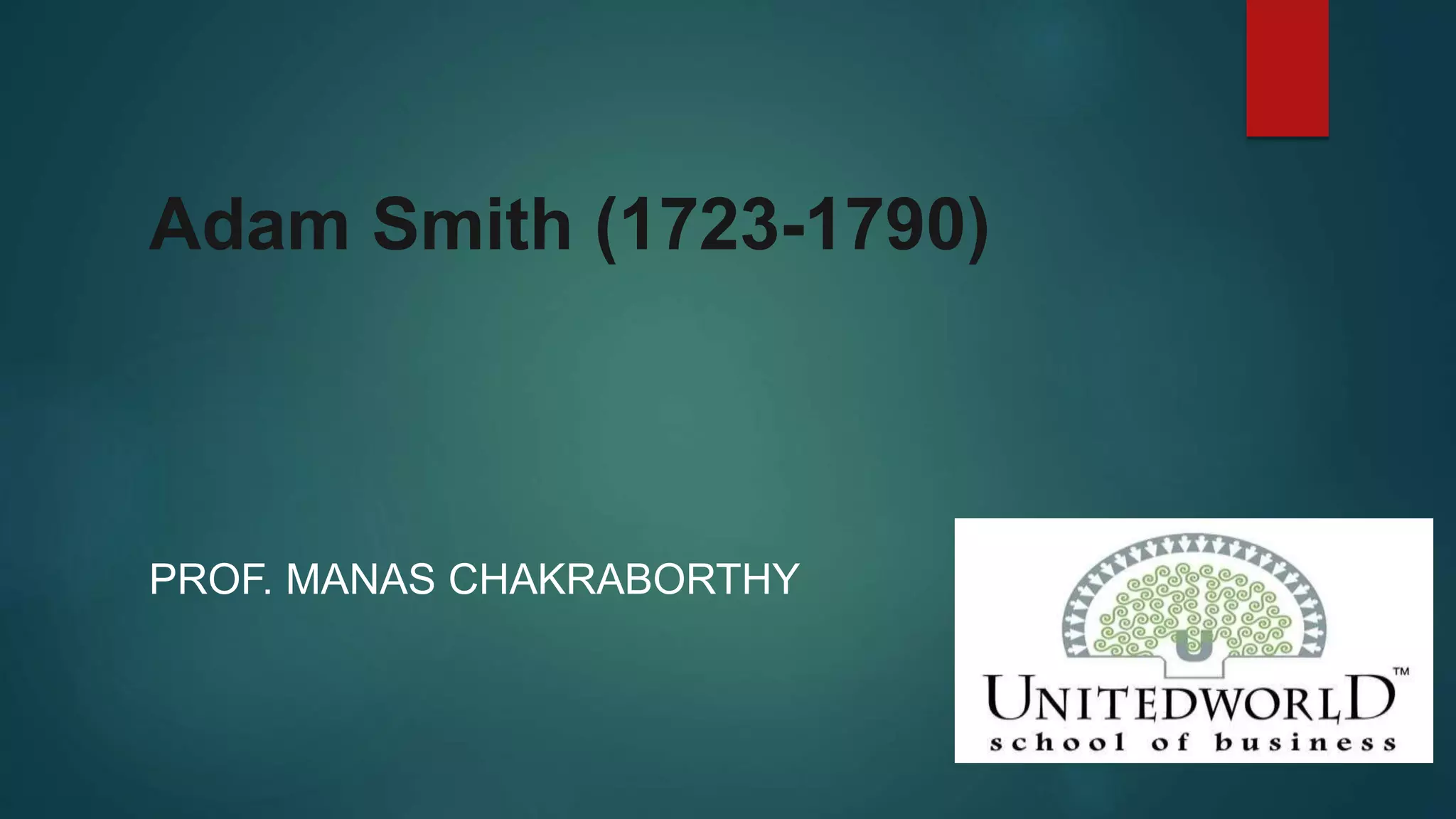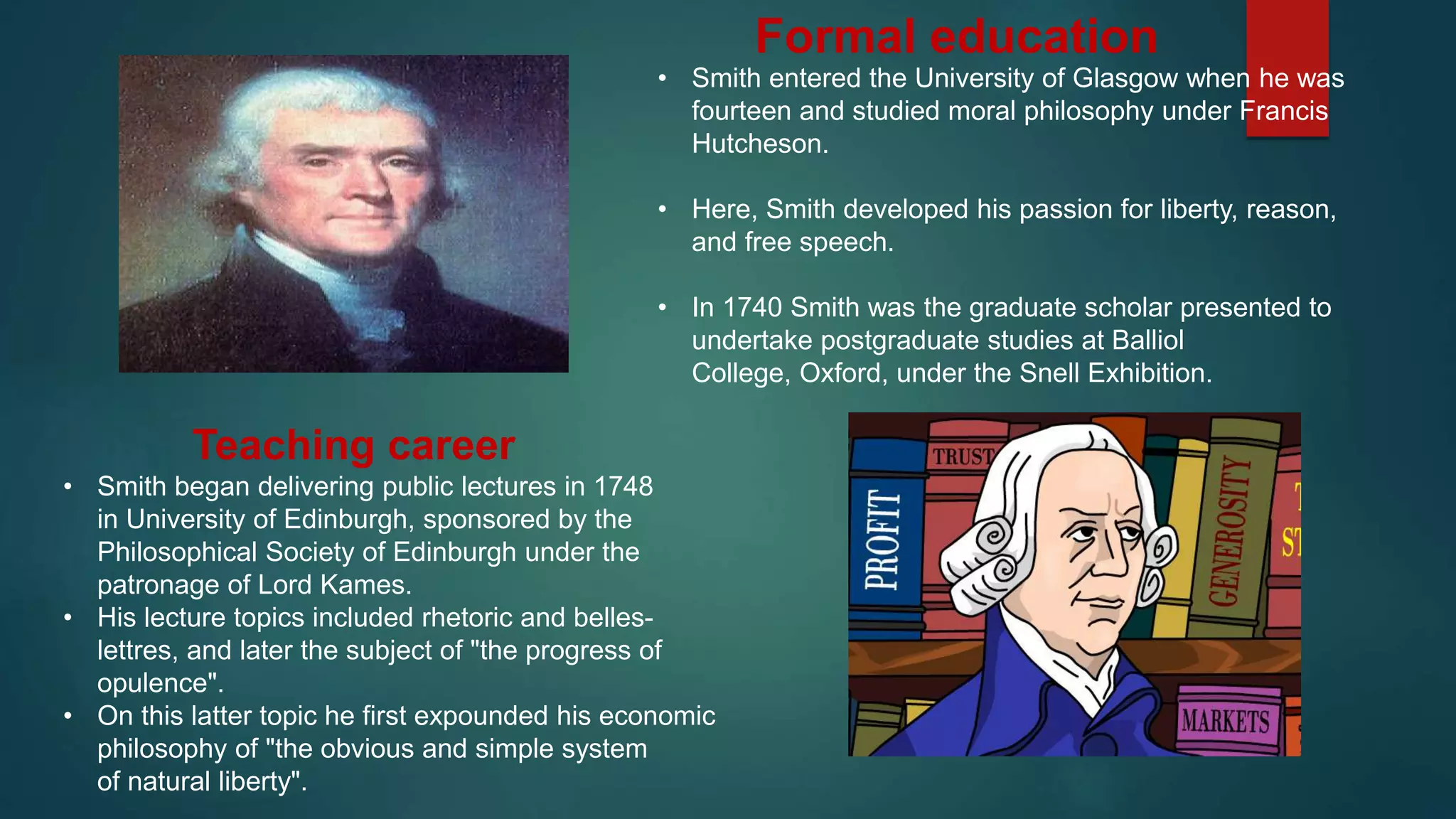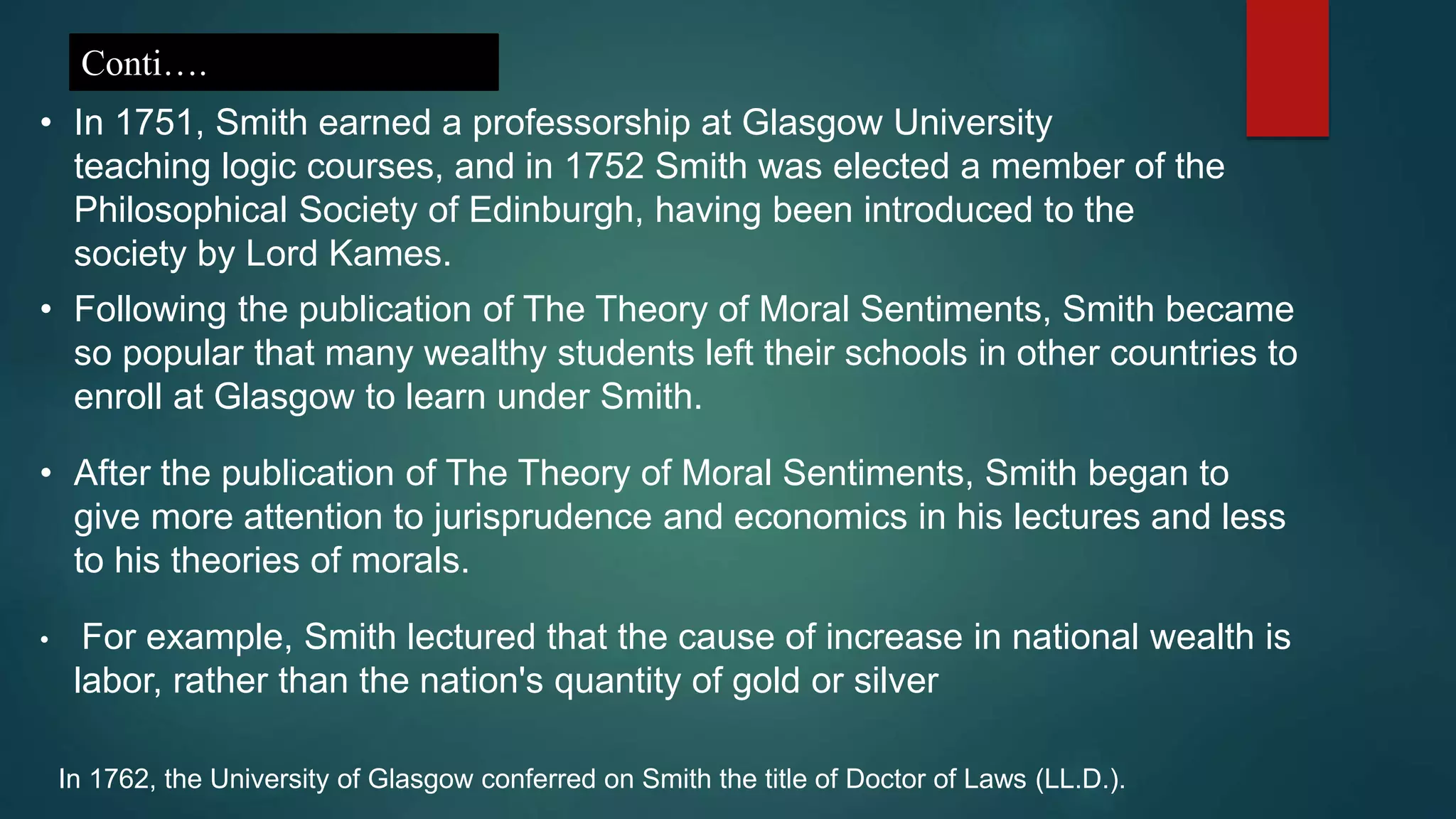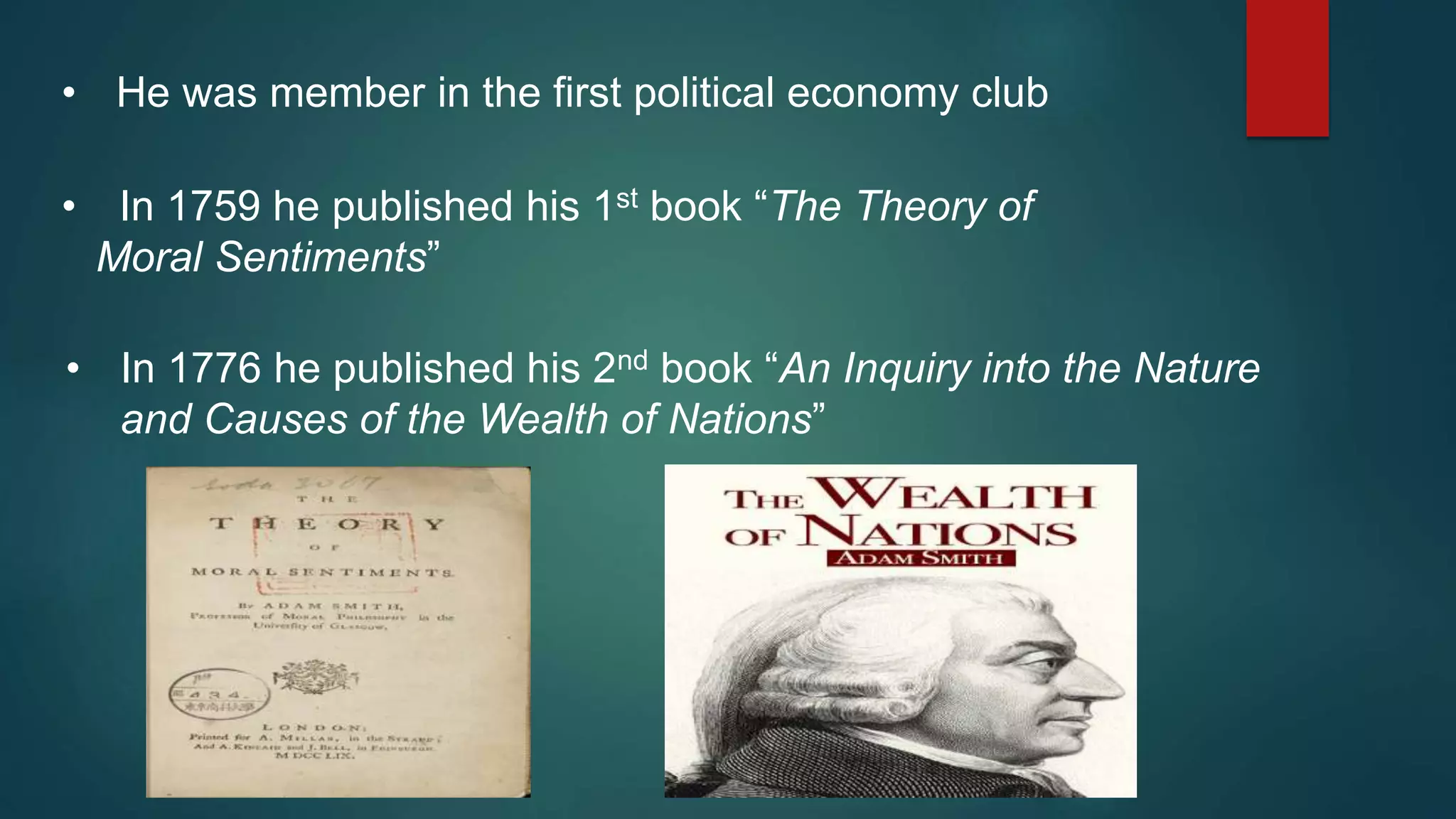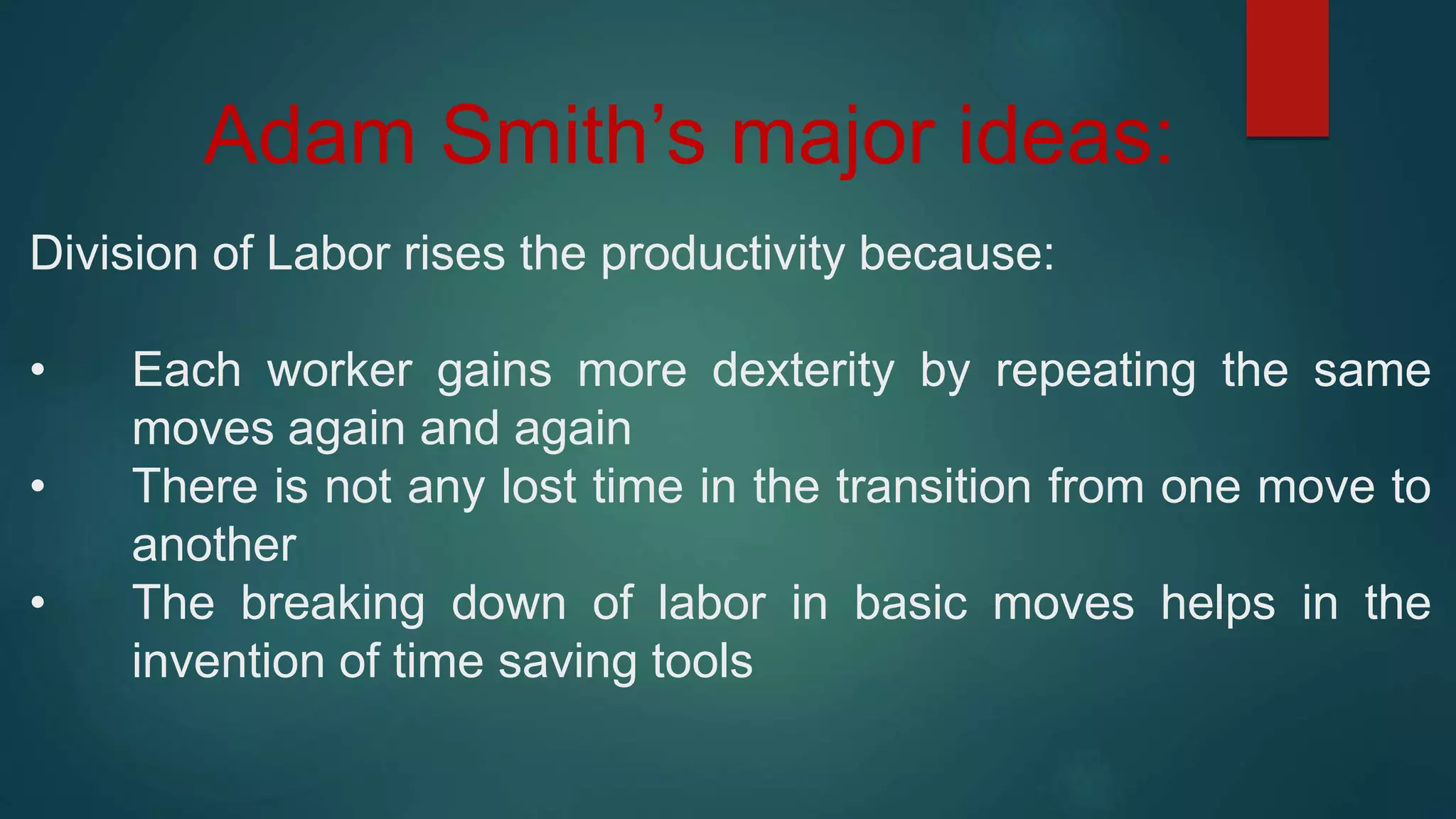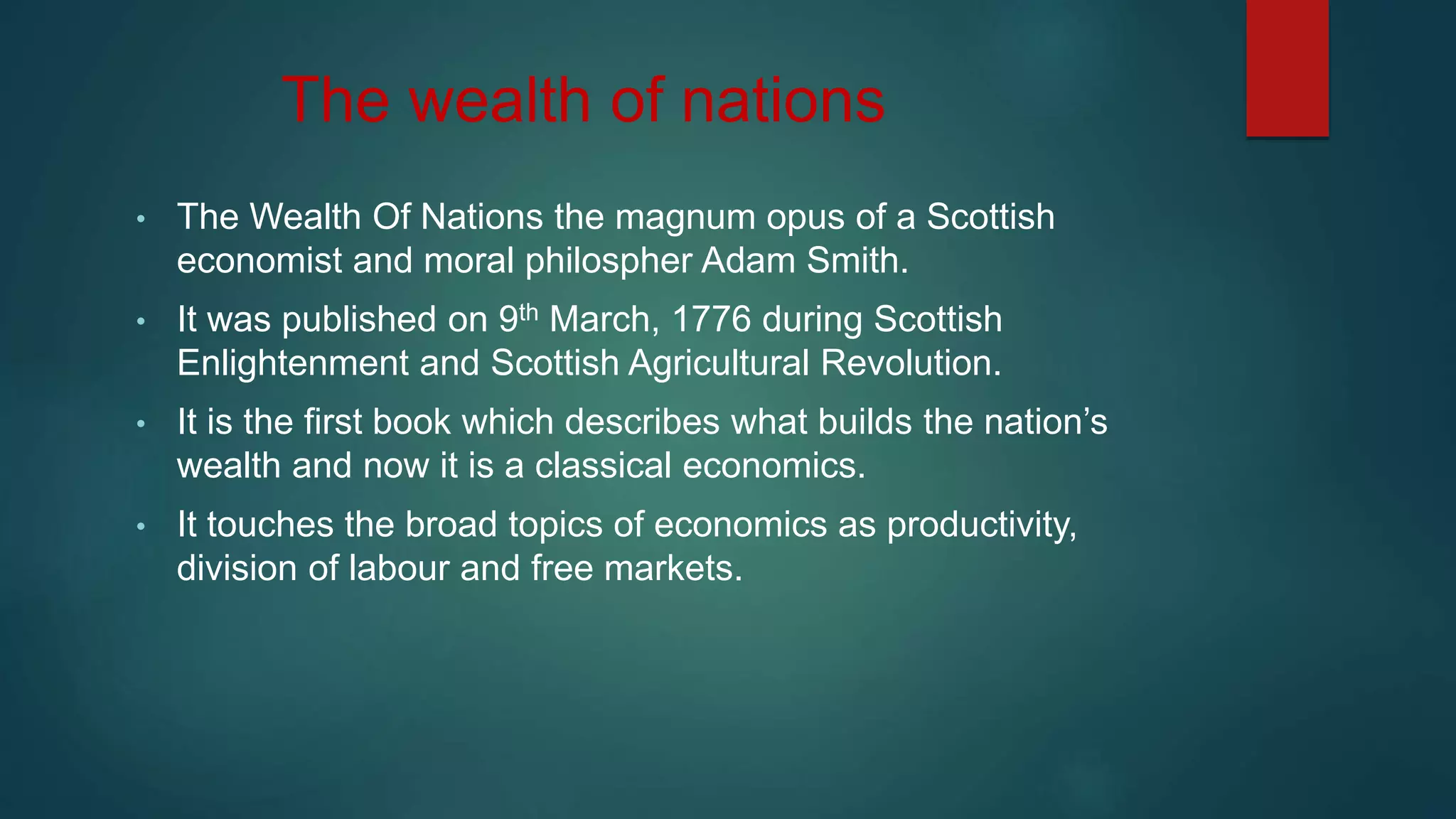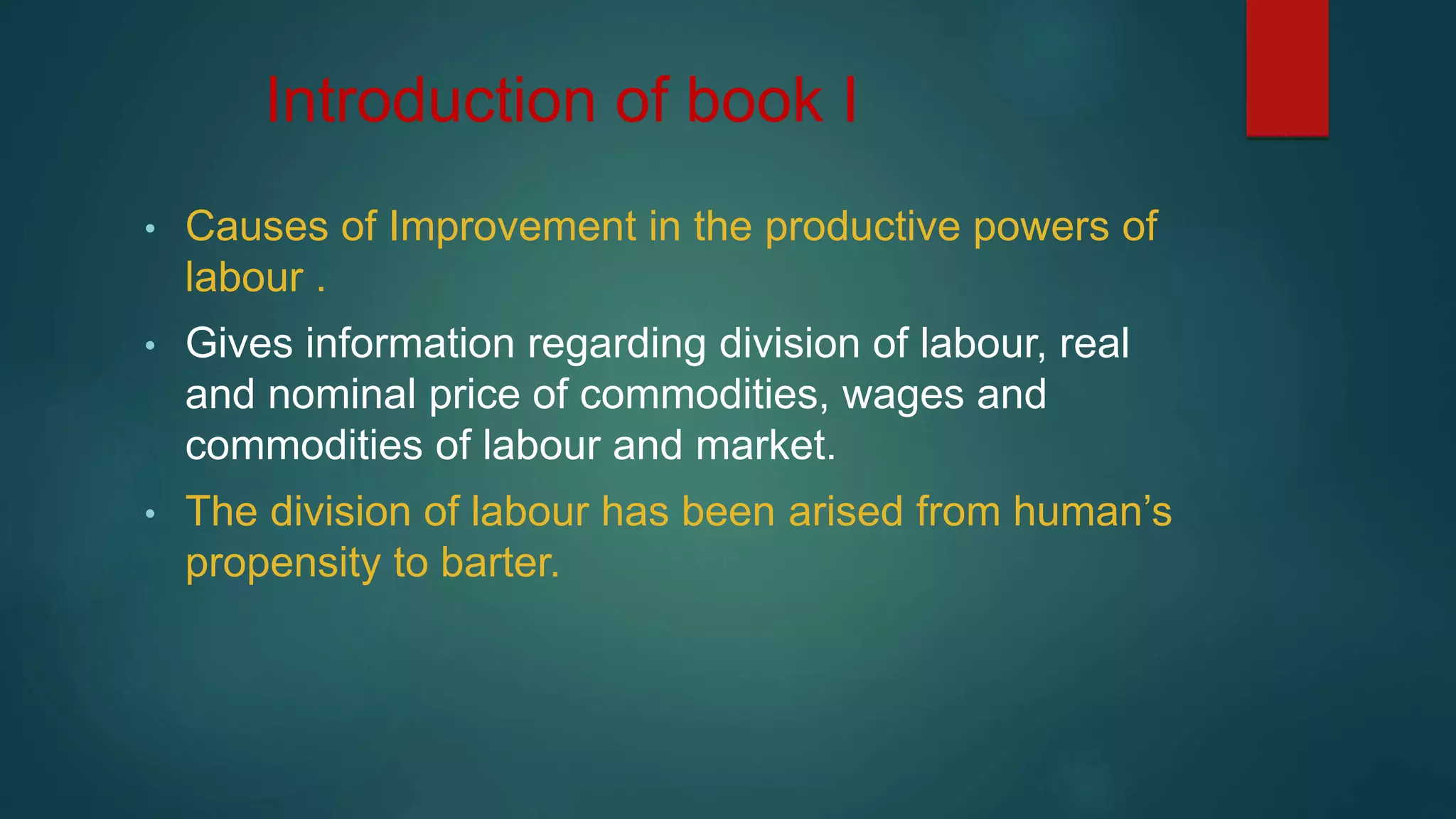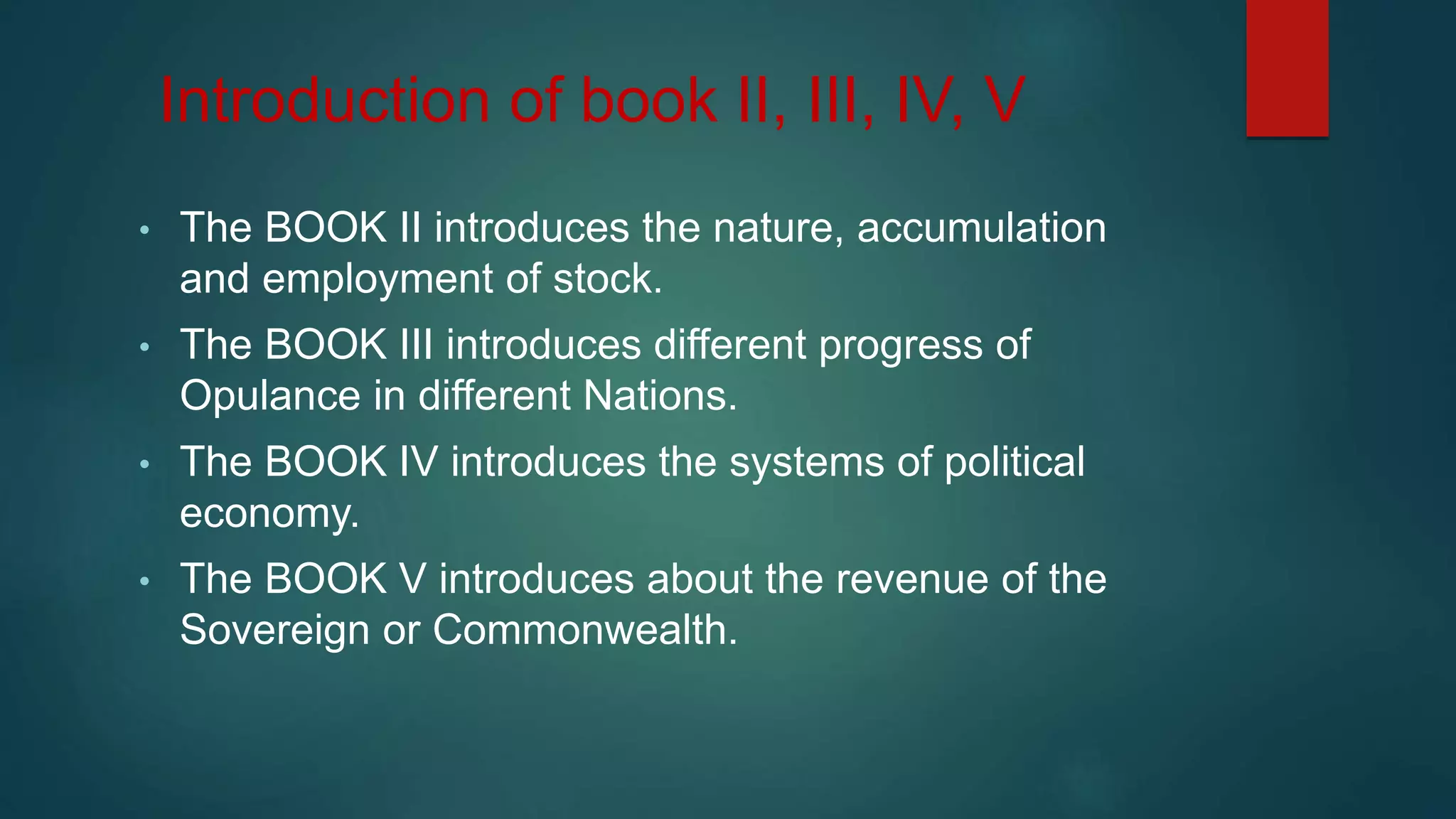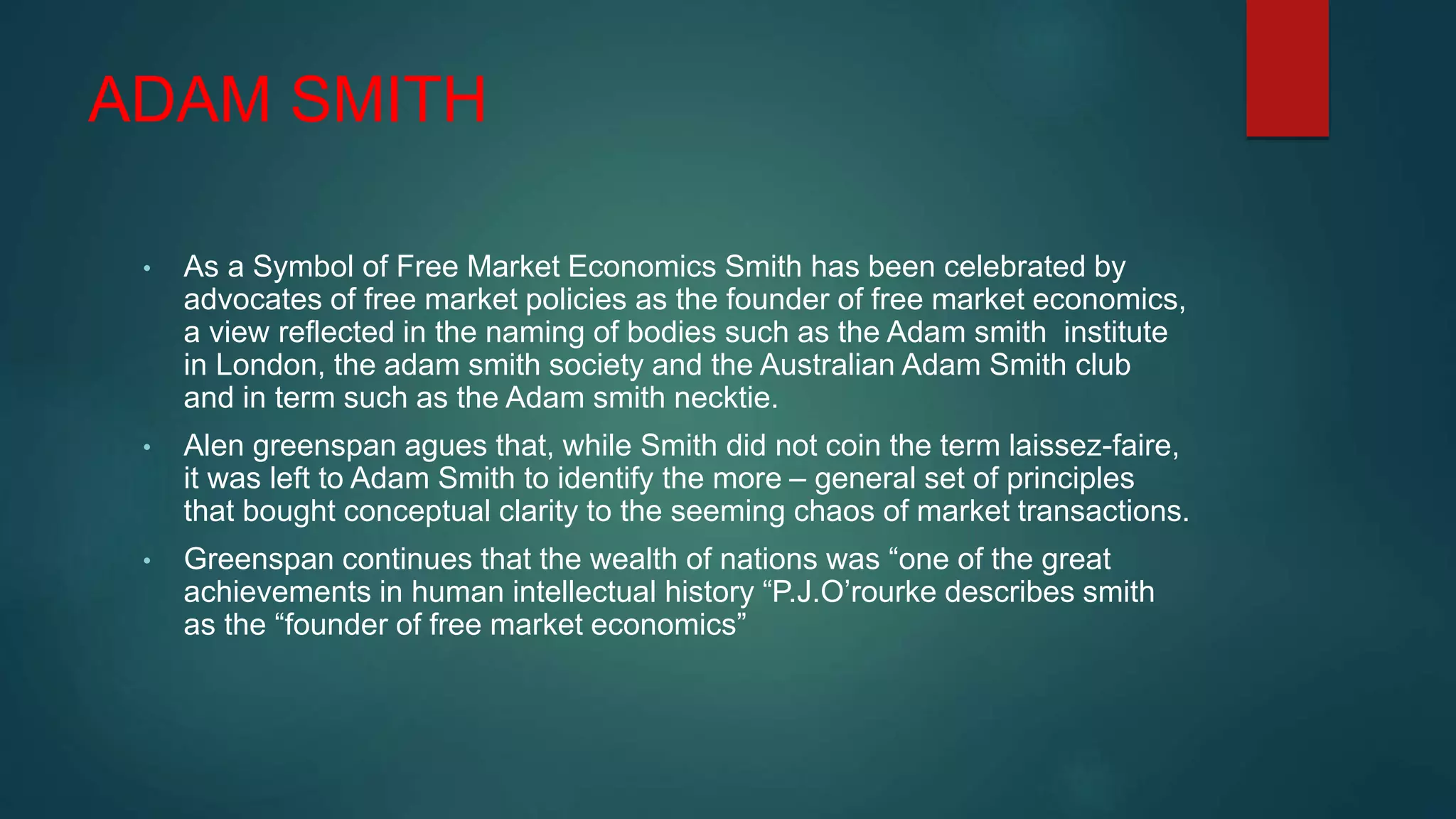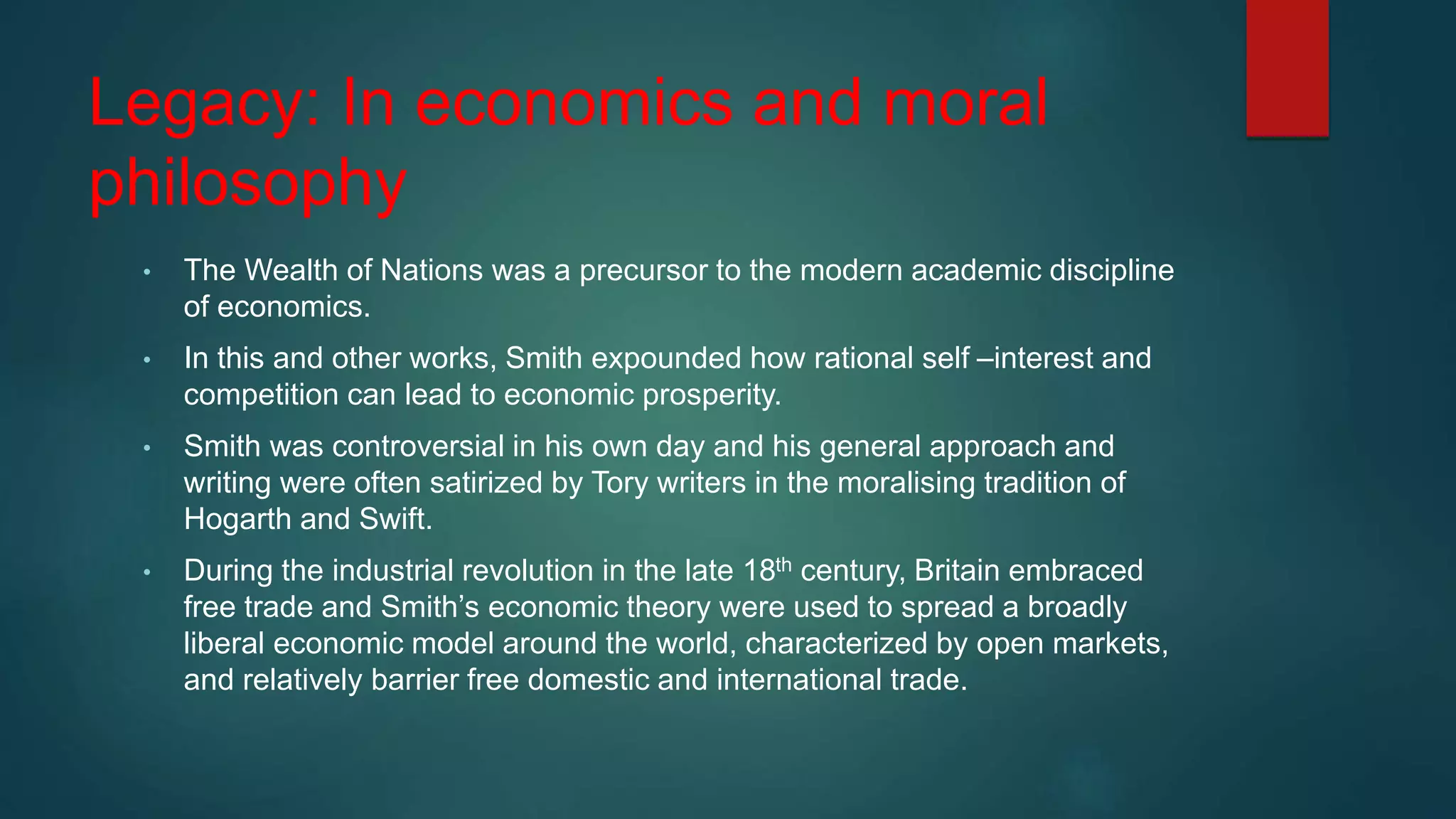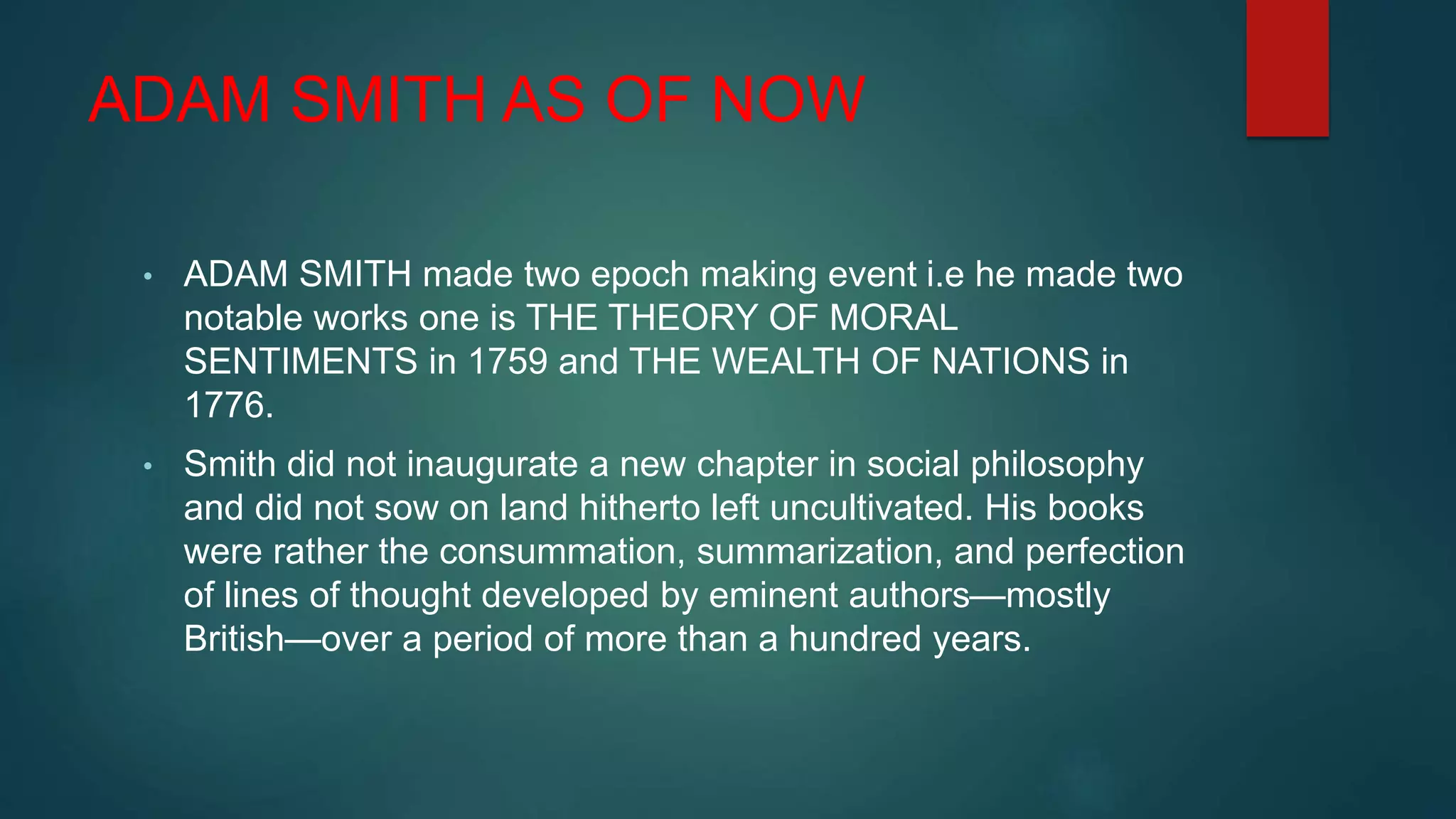Adam Smith (1723-1790) was a Scottish economist and moral philosopher known for his influential works 'The Theory of Moral Sentiments' and 'The Wealth of Nations,' which laid the foundation for classical economics and introduced concepts like the division of labor and the 'invisible hand.' He argued that labor is the true source of national wealth and categorized society into three classes: capitalists, landlords, and workers. Smith's ideas on free markets and economic principles significantly shaped modern economics and are celebrated worldwide.
